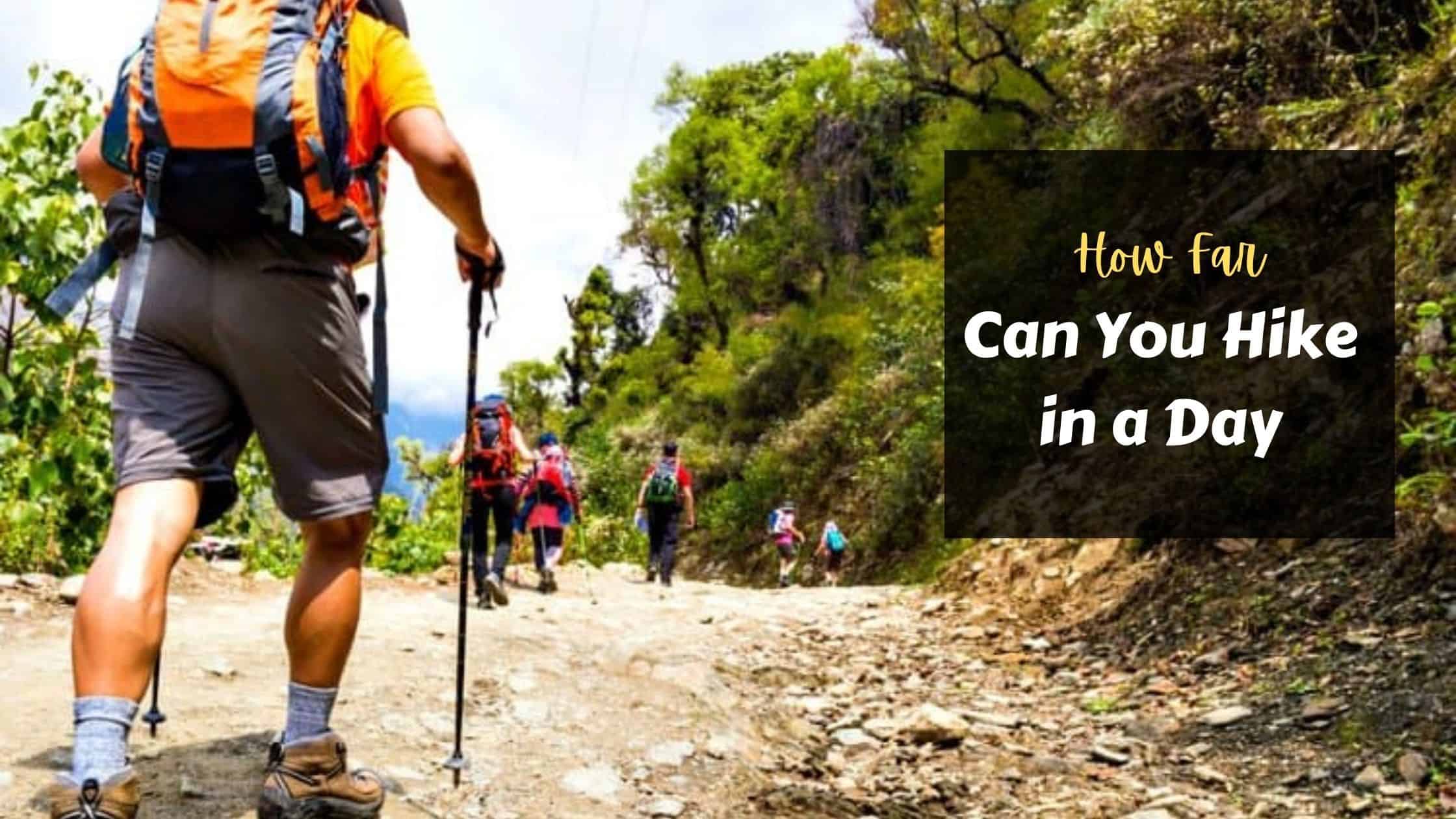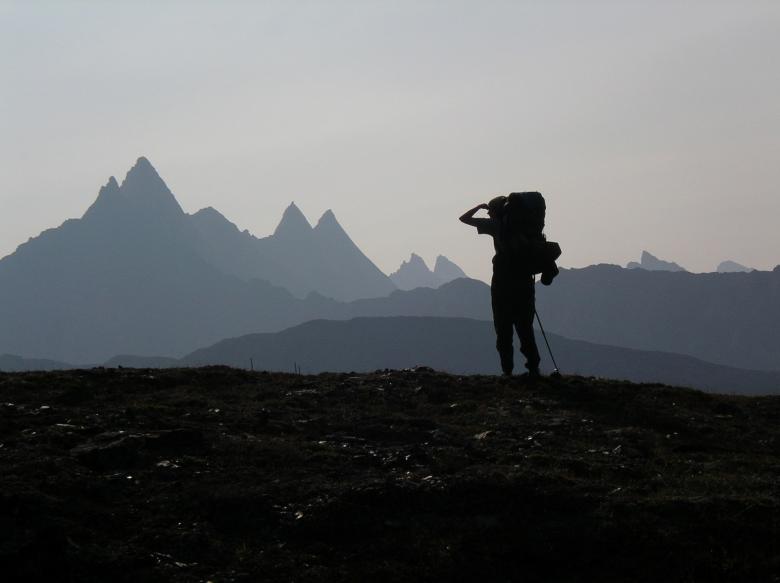How Far Can You Hike in a Day
Whether you’re an experienced thru-hiker trying to challenge your limits, or a beginner hiker trying to plan their first hike, one of the most important questions that pop up is how far you can hike in a day.
Ask around the hiking community, “how far can you hike in a day?” and the answers will fall within a huge range. There’s no fixed answer.
The average distance a person can hike per day depends on several factors:
- Fitness levels
- Trail terrain and length
- Weather conditions
- Changes in elevation
- Any weight you’re carrying (hiking gear)
Let’s take a closer look at the factors that decide your daily hiking quota.
Factors That Affect How Far You Can Hike in a Day
I always stress this for budding hikers – establish your own pace. Pushing too hard won’t just result in less fun; you can overstrain your muscles and end up with injuries.
On the flip side, you don’t want to stroll so leisurely that you don’t get anything out of the hike. Once you’ve hit a comfortable stride, stick to it.
Fitness Levels
It goes without saying that the fitter you are, the easier hiking will be for you. People with stronger muscles can walk at a faster pace; people with higher endurance can walk for longer periods of time.
I suggest working walks into your daily schedule, and slowly improving muscle strength from there. Start with more attainable goals like walking 5 miles a day, then slowly increasing the distance until you can easily hike 30 miles a day.
Hiking Experience
First time hikers naturally hike fewer miles a day compared to an experienced one. It’s not just about letting your muscles get used to hiking; the way you assess and navigate terrain will improve with time.
You’ll slowly learn the best way to approach inclines, when to take breaks and when to push through the exhaustion.
Understand that long hikes take strategy!
Terrain
What kind of landscapes are you walking through? Is the ground rocky or well-paved? Are you besieged with inclines or is the trail flat all the way?
The terrain you’re hiking on largely impacts your hiking speed.
Flat, well-maintained grounds allow you to walk quickly and efficiently; generally less taxing on your body. Any non-level ground however, will slow you down significantly.
Where walking uphill saps your stamina, going downhill requires you to slow down in order to balance properly and protect your knees. Rocky grounds or marshlands also require a lot more body engagement to stay balanced, resulting in slower progress.
Duration & Length of the trail
As with any form of exercise; the longer you go at it, the more energy you burn through down the line. How far you can hike in a day depends on how long you’re spending on the trail.
If you’re speeding through a 10-mile day hike, your speed will decrease exponentially. On the flip side, break down the hike over two or three days and you’ll find it much easier to keep a consistent pace.
People who hike over an entire week (or longer) tend to increase hiking pace over time. This is because their bodies have gotten used to the motion of walking while carrying gear.
Your body now knows how to burn energy efficiently, allowing you a faster pace after the initial few days.
Weather & Season
Weather and season definitely affect how many miles you can hike in a day. On a perfect day – moderate temperatures, no direct sunlight, no rain – you can hike for hours without feeling too tired.
High humidity, shining sun, windy or icy weather will naturally slow you down; not only have your comfort levels dropped, your body is also burning more energy to regulate your body temperature.
Season don’t just directly correlate with weather conditions; it also determines your sunlight hours. While summer offers 10 to 12 hours of day, winter cuts your days short.
Hiking in the dark is not recommended, so you have fewer hours to work with.
Altitude (elevation gains or changes)
Scientific studies have proven that elevation changes do affect your speed – not only because you’re climbing inclines, which demand more of your muscles. Oxygen levels drop rapidly with every height increase, which impacts how well your body operates.
Once you hit over 8,000 feet above sea level, expect a drop in speed as your body adjusts to burning energy with less oxygen. For every 2,000 feet climb, that’s another 1 hour onto your original hiking speed.
Gear Weight
The weight of your backpack and gear impacts how many calories you burn in a hike. The more weight you’ve got, the more energy you’re burning and the slower you hike.
Since hiking with gear is nothing like walking around the city with a work pack, I recommend practicing whenever possible. Let your body get used to moving with gear on the back.
It’s also important to find the perfect backpack that fits your body’s size while offering ample storage.
Common Questions About Day-to-Day Hiking
How long can an average person hike every day?
The average backpacker walks at a pace of 2 to 3 miles per hour. If you take the peak daylight hours to be 8 hours, you cover anywhere between 16 to 24 miles.
This applies to trails that are relatively flat, and hikes during temperate seasons.
Of course, you’re more likely to hike between 2 and 3 hours – the average length for a hike. Typically, this means a distance of 8 to 10 miles.
Is there a recommended amount of hiking time?
If you’re still testing the waters, start by walking the amount that health experts recommend. People who tend to sit a lot for work are advised to take at least 10,000 steps every day; or exercise moderately for 30 minutes.
Use mobile apps to track your steps and figure out your walking speed. Calculate how much distance you can cover in the time you’ve set out for hiking.
How far do you actually want to hike?
Of course, it’s all about how far you actually want to hike in a day! For those hiking longer trails, I suggest marking the route with a few turn-around points, just in case you decide to cut your walk short.
You also want to consider the purpose of your hike. If you’re hoping to sightsee and enjoy time in nature, a slower pace is much more conducive.
Factor in time to rest, time for photos, and time to enjoy the hiking process.
In Conclusion
How far you can hike in a day depends on many factors. Some, like fitness levels and experience, can be worked on over time.
Others, such as weather conditions and terrain, takes a little more planning on your part.
Don’t feel discouraged if you’re hiking fewer miles than expected. There’s a lot that can be done to increase stamina levels and subsequently, the length of your hike.
If you’re looking to challenge your hiking abilities safely, be sure to check out this article: Is Hiking Every Day Bad. To summarize, hiking every day can benefit your body, but only if you approach it properly!
I’ve outlined plenty of tips on how to build a healthy hiking habit, and how to safely achieve your hiking goals.


